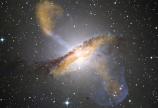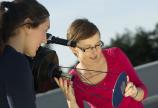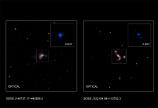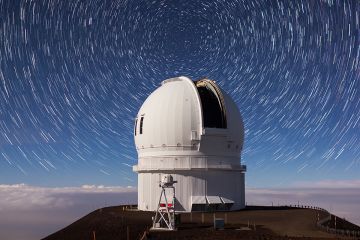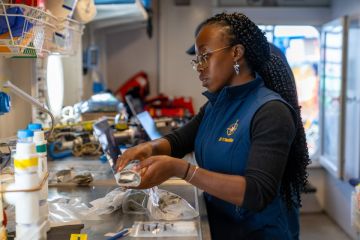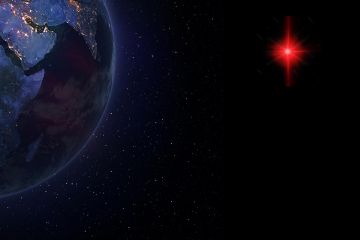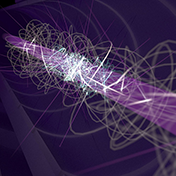When galaxies collide: In search of supermassive black hole pairs

A University of Victoria astronomer has discovered an inspired method of finding the elusive pairing of supermassive black holes that mark merging galaxies, a discovery that may provide clues to the future of Earth’s own galaxy.
As galaxies near each other, they distort in shape, breaking and reforming the orbits of the billions of stars within them. The two galaxies then spiral toward each other, eventually colliding. The supermassive black holes that are at the centre of each galaxy are drawn together in the collision and ultimately form a single bigger supermassive black hole.
But before they merge, the two black holes exist in relatively close proximity, feeding from nearby matter. The formation is known as a dual active galactic nucleus (AGN).
“Supermassive black hole mergers take place over hundreds of millions of years,” says Sara Ellison. “The more pairs that are found, the better we can understand how these formative interactions happen.”
But dual AGNs have been frustratingly difficult to spot. After a decade of systematic searching by researchers across the globe, only 10 had been discovered and confirmed with X-ray observations.
Seeking a more effective method to find dual AGNs, Ellison and her collaborators analyzed data from sky surveys, looking for dust and gas that are stirred up in the late stages of a black-hole merger, in combination with the bright light produced by dual AGNs. That work, backed up by observations from the NASA Chandra X-Ray Observatory, led to the identification of five new AGN pairs in the last six months.
Researchers have predicted that in 4 billion years, the Milky Way – the Earth’s galaxy – will collide with the much larger Andromeda Galaxy. “Understanding dual AGNs and the role they play in galaxy mergers could give us insight into the fate of the Milky Way,” says Ellison.
Ellison’s work was funded through a Natural Sciences and Engineering Research Council Discovery grant and has been published in the September 2017 issue of Monthly Notices of the Royal Astronomical Society. The New Scientist has written about her research. A companion paper with information on newly discovered AGNs was published in the Astrophysical Journal. NASA has issued a news release of Ellison’s findings.
-- 30 --
Photos
Media contacts
Sara Ellison (Physics & Astronomy) at 250-721-7737 or sarae@uvic.ca
Vimala Jeevanandam (Communications Officer, Faculty of Science) at 250-721-8745 or scieco@uvic.ca
In this story
Keywords: physics and astronomy, astronomy, black hole, research
People: Sara Ellison







